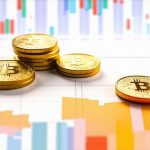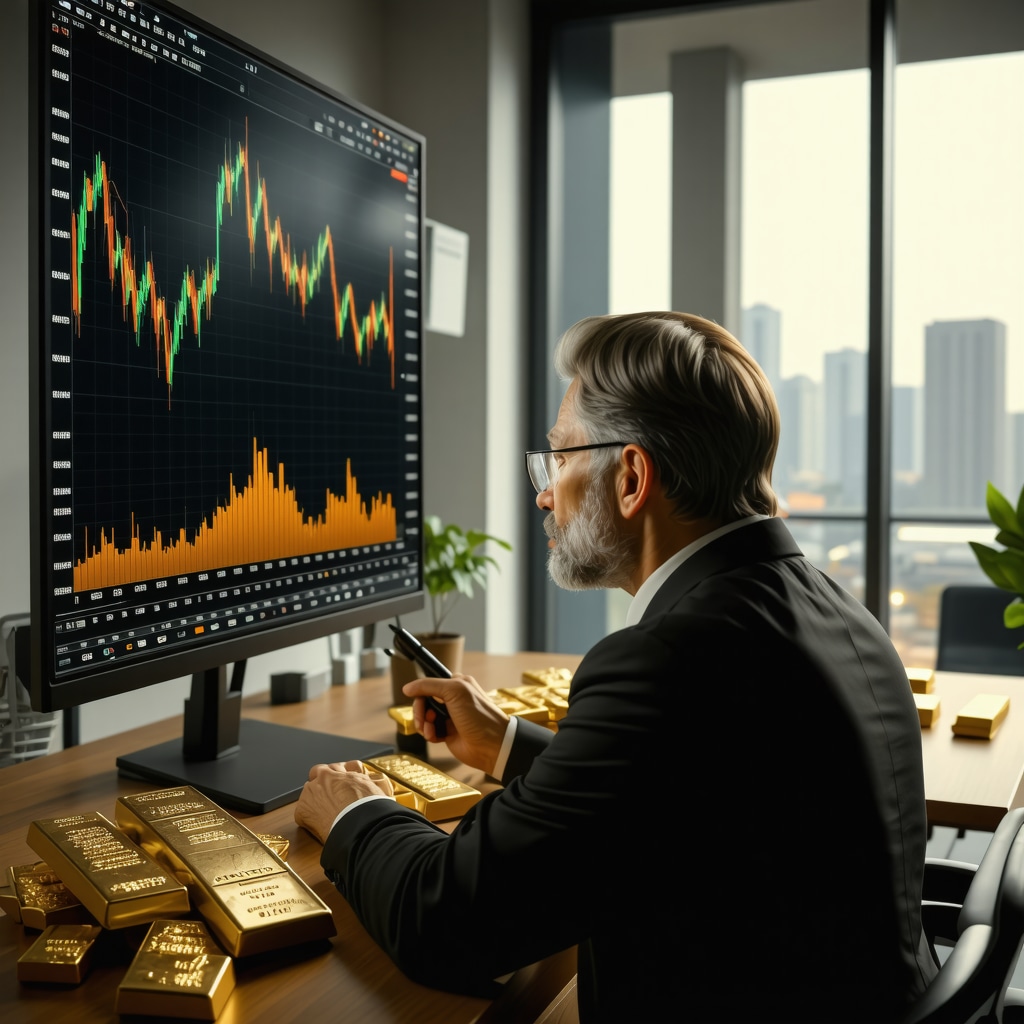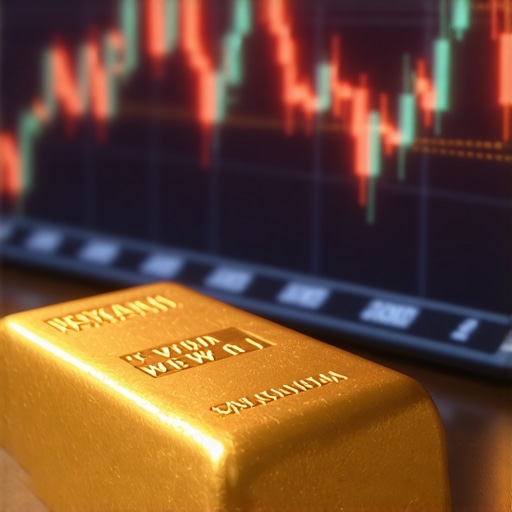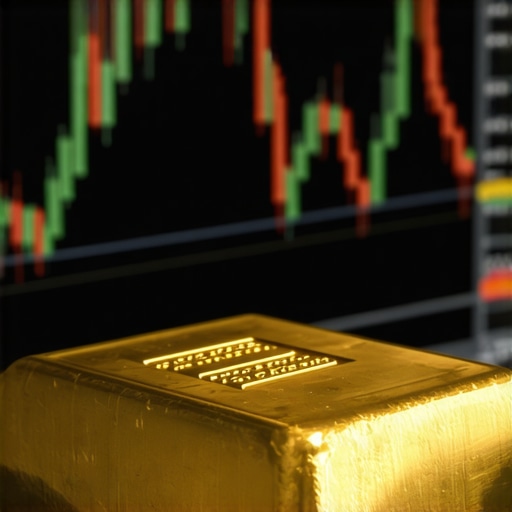Unveiling the Complex Dynamics of Gold Price Forecasts for 2025
As we approach the pivotal year of 2025, investors and financial analysts are meticulously scrutinizing the multifaceted factors that will shape gold prices. The precious metal’s role as a hedge against inflation, geopolitical tensions, and currency fluctuations makes its forecast a vital component of strategic portfolio management. Understanding these dynamics requires a deep dive into macroeconomic indicators, central bank policies, and emerging market trends.
How Macroeconomic Trends Influence Gold Price Predictions
Fundamental economic indicators such as inflation rates, interest rate trajectories, and GDP growth projections significantly impact gold valuations. Historically, during periods of rising inflation, gold has acted as a reliable store of value, leading to increased demand. According to a recent market analysis, inflationary pressures in major economies could drive gold prices upward in 2025.
What role will global monetary policy adjustments play in shaping 2025 gold prices?
Central banks’ gold purchase strategies, especially in emerging economies, could be a decisive factor. As outlined in a white paper by the World Gold Council, shifts in central bank holdings often presage market sentiment. Increased accumulation may signal confidence in gold as a reserve asset, potentially elevating its price trajectory.
The Impact of Geopolitical and Political Uncertainty
Geopolitical tensions, trade disputes, and political instability tend to bolster gold’s appeal as a safe haven. The ongoing geopolitical landscape, including potential conflicts and diplomatic shifts, suggests that gold could experience volatility but also opportunities for strategic positioning. For instance, recent analyses highlight how political uncertainties can temporarily inflate gold prices, providing lucrative entry points for seasoned investors.
Will Emerging Market Demand Continue to Drive Prices?
Demand from emerging markets, especially China and India, remains a critical factor. Jewelry consumption, investment demand, and official reserves contribute to this trend. An in-depth review by industry experts indicates that rising affluence and cultural factors will sustain high demand levels, thus supporting gold prices through 2025.
Can gold’s role as an inflation hedge outperform other assets in 2025?
While stocks and cryptocurrencies are often compared as alternative investments, gold’s historical resilience during inflationary periods suggests it may outperform in certain scenarios. Investors eager to diversify might consider integrating physical gold or gold ETFs, which offer liquidity and security, into their portfolios.
For those interested in diversifying their holdings with gold, exploring options such as gold coins and bullion can be a prudent move. To deepen your understanding, consult expert resources and consider consulting with a financial advisor specialized in precious metals.
If you wish to contribute your insights or stay updated on expert forecasts, we invite you to explore our comprehensive analysis.
Decoding the Intricacies of Gold Price Movements: A Strategic Perspective for 2025
As the global economic landscape becomes increasingly complex, understanding the nuanced drivers behind gold price fluctuations is vital for investors aiming to optimize their portfolios. Beyond macroeconomic indicators, factors such as technological advancements in mining, geopolitical shifts, and shifts in consumer behavior play pivotal roles. Recognizing these subtle influences enables a more sophisticated approach to gold investment strategies.
How Will Technological Innovation Transform Gold Supply and Demand?
Emerging technologies in mining and refining processes are revolutionizing gold production, potentially impacting supply levels. Automation, AI-driven exploration, and sustainable extraction methods can lead to more efficient supply chains, possibly stabilizing or even decreasing production costs. According to a comprehensive industry report, these innovations might influence gold prices by altering the balance between supply and demand, especially in regions where technology reduces environmental and operational costs.
Could breakthroughs in gold recycling and digital assets redefine demand landscapes?
Recycling of gold from electronic waste and other sources is gaining momentum, potentially easing supply constraints. Simultaneously, the rise of digital gold and blockchain-backed assets offers new avenues for investment, appealing to a broader demographic. Experts suggest that these developments could diversify demand channels, impacting both short-term volatility and long-term valuations.
For investors contemplating diversification, exploring gold ETFs and mutual funds provides a flexible and liquid means to gain exposure without the logistical challenges of physical gold. Understanding the evolving landscape of demand, including technological and environmental factors, is crucial for making informed decisions.
The Role of Investor Sentiment and Market Psychology
Market sentiment, often influenced by geopolitical news, economic data releases, and social media narratives, can induce swift price movements in gold markets. Recognizing the psychological patterns that drive investor behavior—such as panic buying during crises or complacency during stability—is essential for timing entry and exit points. Behavioral finance studies highlight that sentiment-driven trading can both create opportunities and amplify risks.
How can investors develop a disciplined approach amid emotional market swings?
Implementing systematic trading strategies, such as dollar-cost averaging or setting predefined stop-loss levels, can mitigate emotional biases. Additionally, leveraging expert analyses and technical indicators can provide a data-driven framework for decision-making. Regularly reviewing market fundamentals alongside sentiment indicators helps maintain a balanced perspective, ensuring that investments are aligned with long-term goals.
To deepen your strategic toolkit, consider exploring advanced gold trading techniques that incorporate market timing and risk management principles.
Engaging with expert commentary and staying informed about global economic policies are vital for navigating the unpredictable waters of gold markets. As noted in a recent industry analysis, adaptability and continuous learning remain key to achieving investment success in 2025 and beyond.
Technological Disruptions and Their Impact on Gold Supply Dynamics
Innovation is rewriting the landscape of gold production, with breakthroughs in automation, AI-driven exploration, and sustainable extraction methods transforming supply chains. These advancements not only enhance efficiency but also potentially reduce costs, which could influence gold prices by altering the supply-demand equilibrium. As detailed in the industry report, the integration of these technologies may lead to a more resilient and environmentally conscious mining sector, ultimately impacting the availability of gold in global markets.
Recycling and Digital Assets: Reshaping Demand and Supply Channels
The rise of gold recycling from electronic waste and other sources presents a significant shift in supply dynamics, potentially easing scarcity concerns. Simultaneously, digital gold and blockchain-backed assets are creating new investment avenues, appealing to a tech-savvy demographic seeking liquidity and transparency. Experts argue that these innovations diversify demand sources, potentially stabilizing prices or introducing new volatility patterns. For investors, understanding these channels is vital for crafting resilient portfolios that leverage both physical and digital gold assets.
Market Psychology and Investor Behavior in a Complex Economic Environment
Market sentiment, driven by geopolitical developments, economic data, and social narratives, remains a potent force behind gold price fluctuations. Recognizing behavioral finance patterns—such as herd behavior during crises or overconfidence during periods of stability—enables investors to anticipate short-term swings. Employing disciplined strategies like systematic dollar-cost averaging and predefined stop-loss orders can help mitigate emotional biases. Additionally, integrating technical indicators with fundamental analysis offers a comprehensive framework for strategic decision-making in volatile markets.
How can sophisticated investors leverage sentiment analysis to optimize gold investment timing?
Advanced sentiment analysis involves monitoring social media, news sentiment, and macroeconomic indicators to gauge market mood. Tools incorporating machine learning algorithms can identify emerging sentiment shifts before they fully materialize in prices, providing a tactical edge. Experts recommend combining sentiment insights with technical signals and macroeconomic forecasts to develop a multi-layered approach, enhancing the precision of entry and exit points. For those eager to deepen their expertise, exploring resources such as gold trading techniques can be invaluable.
By adopting a holistic view that balances technological, behavioral, and macroeconomic factors, investors can better position themselves to navigate the complexities of the gold market in 2025. Staying informed through expert analyses and continuously refining strategies in response to evolving market signals will be key to long-term success.
Deciphering the Impact of Geopolitical Shifts on Gold Valuations in 2025
As geopolitical landscapes evolve, their influence on gold prices becomes increasingly intricate. Emerging conflicts, diplomatic realignments, and trade policies can trigger rapid market reactions, necessitating sophisticated geopolitical risk assessment models. According to the International Monetary Fund’s detailed research paper, integrating geopolitical risk indices with market sentiment analytics enhances predictive accuracy, enabling investors to anticipate price surges or dips with greater precision.
How Will Blockchain and Digital Gold Reshape Investment Portfolios?
The advent of blockchain technology has revolutionized the landscape of gold investment, facilitating secure, transparent, and fractional ownership through digital gold assets. These innovations not only diversify demand channels but also introduce new liquidity paradigms. Financial analysts highlight that blockchain-backed gold enables real-time trading and settlement, reducing transaction costs and increasing accessibility for retail and institutional investors alike. For a comprehensive overview, see the recent report by FinTech Review.
Can integrating digital and physical gold assets optimize risk-adjusted returns?
Yes, combining physical bullion with blockchain-based tokens offers a hybrid approach that balances tangible security with liquidity and ease of transfer. This strategy mitigates risks associated with physical storage and geopolitical disruptions, allowing for agile portfolio adjustments. Financial experts recommend employing dynamic allocation models that leverage real-time market data and sentiment indicators to optimize holdings across both asset classes.
What Are the Latest Innovations in Gold Mining Technology and Their Market Implications?
Recent breakthroughs in autonomous exploration, AI-driven resource estimation, and eco-friendly extraction methods are transforming supply-side dynamics. These technological advancements have the potential to increase output efficiency, lower operational costs, and reduce environmental impact. Industry reports from the World Gold Council suggest that such innovations could stabilize supply in the face of rising demand, thus influencing short- to medium-term price trajectories.
How might breakthroughs in gold recycling technology influence supply stability?
Recycling innovations, including automated electronic waste processing and chemical recovery methods, are expanding the supply base and reducing reliance on traditional mining. This shift not only alleviates environmental concerns but also introduces a more resilient supply chain. Experts emphasize that increased recycling capacity could temper price volatility, especially during periods of heightened demand or mining disruptions.
Advanced Sentiment Analysis: The Frontier of Market Timing in Gold Investments
Utilizing machine learning algorithms to parse social media chatter, news feeds, and macroeconomic data offers a cutting-edge approach to gauging market sentiment. Such tools can detect subtle shifts in investor mood well before they manifest in price movements, providing a strategic advantage. According to recent studies in Quantitative Finance Journal, integrating sentiment metrics with technical analysis enhances timing accuracy and risk management.
How can traders leverage sentiment analysis to navigate volatile gold markets effectively?
By developing customized dashboards that synthesize sentiment signals with price action and fundamental indicators, traders can implement proactive strategies such as scalp trading or options hedging. Continuous model refinement, incorporating real-time data feeds, ensures adaptability to evolving market conditions. Engaging with expert-level resources and advanced analytics platforms is crucial for maintaining an edge in these dynamic markets.
Stay ahead of the curve by exploring innovative tools and strategies that incorporate geopolitical intelligence, blockchain developments, and AI-powered sentiment analysis. Deepening your understanding of these complex factors will empower you to craft resilient, high-performing gold investment portfolios in 2025 and beyond.
Expert Insights & Advanced Considerations
1. The Interplay of Central Bank Reserves and Market Confidence
Shifts in central bank gold holdings often serve as a barometer for market sentiment. Increased accumulation indicates confidence in gold as a hedge, potentially signaling bullish price movements. Monitoring these reserves provides strategic foresight for seasoned investors aiming to anticipate market shifts.
2. Technological Innovation as a Catalyst for Supply Stability
Emerging mining technologies, such as AI-driven exploration and sustainable extraction, are transforming supply dynamics. These advancements can lead to more resilient supply chains, which may temper volatility and influence long-term price stability.
3. The Rising Role of Digital Gold and Blockchain Assets
Blockchain-backed gold tokens and digital assets are diversifying demand and improving liquidity. Their integration into portfolios offers a hybrid approach combining physical security with digital flexibility, essential for modern wealth management strategies.
4. Behavioral Finance and Sentiment Analysis in Market Timing
Advanced sentiment analysis, utilizing machine learning on social media and news feeds, enables investors to gauge market mood ahead of price movements. This approach enhances timing precision and risk management, vital in volatile environments.
5. Geopolitical Risks and Price Volatility
Dynamic geopolitical landscapes require sophisticated risk assessment models that integrate geopolitical risk indices with market sentiment analytics. These tools improve predictive accuracy, helping investors navigate potential surges or dips in gold prices.
Curated Expert Resources
- World Gold Council Reports: The authoritative source for industry data on supply, demand, and technological innovations shaping the gold market.
- Quantitative Finance Journal: Provides cutting-edge research on sentiment analysis, machine learning applications, and advanced trading strategies for precious metals.
- International Monetary Fund Publications: In-depth analyses of geopolitical risks and macroeconomic factors influencing gold valuation in 2025.
- FinTech Review: Offers comprehensive insights into blockchain developments and their impact on gold investment portfolios.
- Industry White Papers: Specialized reports on new mining technologies and recycling innovations impacting supply stability.
Final Expert Perspective
In the evolving landscape of 2025 gold markets, integrating macroeconomic indicators, technological advancements, and behavioral insights is paramount. The most impactful understanding is recognizing how digital assets and geopolitical dynamics intertwine with supply-demand fundamentals, shaping resilient investment strategies. For professionals seeking to deepen their expertise, engaging with authoritative resources like the market analysis and demand trend reports will be essential. Explore these insights further and contribute your strategic perspective to navigate the intricate gold market in 2025 with confidence.










